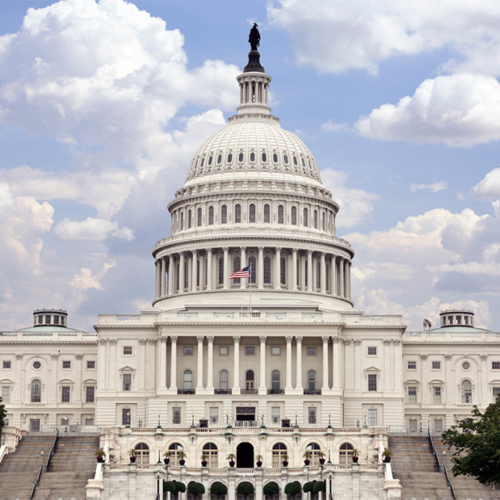Reentry Essentials: A Look at National Progress on the 10th Anniversary of the Second Chance Act
This is the second in a series of posts on aspects of successful reentry. Each post will include curated resources related to the featured reentry topic.
Thinking on Reentry Has Evolved
The Second Chance Act (SCA) was signed into law in April 2008—10 years ago this month, which has been named “Second Chance Month” by President Trump. Passed with bipartisan support, SCA helps state, local, and tribal governments and nonprofit organizations in their work to reduce recidivism and improve outcomes for people returning to their communities from state and federal prisons, local jails, and juvenile facilities. The 10th anniversary of the passage of SCA is an opportune moment to reflect on the changes in criminal justice policy and practice that have taken place over time. One of the most significant developments in recent years has been a fundamental shift in thinking about reentry. Today, there is widespread agreement that, to be successful in the long term, the reentry process should begin at the time a person is incarcerated, rather than at the time of release into the community.
Read more:
Reentry Includes a Breadth of Services
Reentry has also come to be seen as encompassing a broad range of service areas, including employment support; mental health and substance addiction treatment; housing assistance; parenting and family programming; mentoring; and specialized programs for youth who are in contact with the criminal and juvenile justice systems. SCA funds these crucial services, with the recognition that successful reentry increases public safety, saves taxpayer dollars, and contributes to the well-being and stability of communities. Since its passage, SCA has supported more than 840 grants to fund reentry programs, as well as system improvements such as enhanced data collection and staff training to help jurisdictions better address the needs of people who are incarcerated.
Read more:
Science of Recidivism Reduction Is Better Understood
The science on what works to reduce recidivism has advanced considerably over the last 20 years. Previously, everyone placed under parole or probation supervision received the same type of supervision, but it is now commonly understood that each person has a distinct criminogenic risk and needs profile. To be most effective at reducing recidivism, research has shown that supervision and treatment should have an individualized approach that aims to change criminal thinking, increase prosocial relationships and activities, address substance addictions, and ensure a stable living environment. For youth, programs and supervision should also be tailored to reflect the distinct developmental needs of adolescents. In addition to funding grant programs, SCA also established the National Reentry Resource Center (NRRC) to provide information and guidance on evidence-based and proven practices in reentry.
Read more:
- Webinar: Risk-Need-Responsivity 101
- Core Principles for Reducing Recidivism and Improving Other Outcomes for Youth in the Juvenile Justice System
Evidence-Based Policies Are More Common
While a gap still exists between evidence and routine policy and procedure, states and localities are increasingly translating research into practice and seeing results. An Urban Institute evaluation of two SCA-funded reentry programs at the Allegheny County Jail in Pennsylvania found that both programs reduced rearrest rates. Another study by the Minnesota Department of Corrections found that participation in SCA-funded reentry programs in two Minnesota state prisons significantly lowered the risk of supervised release revocations and reconvictions—by 28 and 43 percent, respectively. Furthermore, many states have seen reductions in recidivism rates in recent years and have attributed their success to shifting practice toward what research shows works to reduce recidivism.
Read more:
Business Community Is Engaged
As these advances in the field have occurred, constituencies outside of the justice system have also embraced the goal of helping people succeed after incarceration. Increasingly, business leaders and workforce development professionals are recognizing how fair access to job opportunities benefits both businesses and prospective employees—prominent employers such as Best Buy, CVS Health, Facebook, PepsiCo, and the Johns Hopkins Health System have promoted hiring people who have criminal records as sensible business practice. In communities across the country, the NRRC has helped local leaders host more than 50 business engagement events in order to explore ways to reduce barriers to employment for people who have criminal records.
New Hampshire Department of Corrections Commissioner Helen Hanks presents at the Medicaid and Corrections Policy Academy in-person meeting.
Read MoreThe Council of State Governments (CSG) Justice Center has launched the Collaborating for Youth and Public Safety Initiative…
Read MoreA bipartisan group of 88 lawmakers, led by Representatives Carol Miller (R-WV) and Danny Davis (D-IL), wrote a…
Read More Meet the Medicaid and Corrections Policy Academy Mentor States
Meet the Medicaid and Corrections Policy Academy Mentor States
New Hampshire Department of Corrections Commissioner Helen Hanks presents at the Medicaid…
Read More Six States Commit to Improving Statewide Strategies to Address Youth Crime, Violence and Behavioral Health
Six States Commit to Improving Statewide Strategies to Address Youth Crime, Violence and Behavioral Health
The Council of State Governments (CSG) Justice Center has launched the Collaborating…
Read More Bipartisan Group of 88 Lawmakers Push for Continued Funding for Reentry and Recidivism Programs
Bipartisan Group of 88 Lawmakers Push for Continued Funding for Reentry and Recidivism Programs
A bipartisan group of 88 lawmakers, led by Representatives Carol Miller (R-WV)…
Read More









